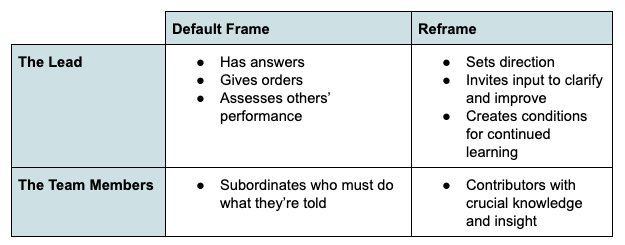Psychological Safety
Notes and learnings from the fearless organization, and some surrounding resources.
Definition
Psychological Safety describes an environment where people feel safe enough to take interpersonal risks by speaking up and sharing concerns, questions, or ideas. An environment where members feel comfortable enough to be vulnerable in front of one another and to make mistakes.
Those who have read The Five Dysfunctions of a Team ( or the Manga Version ), will draw some comparisons between Psychological Safety, and the base of the pyramid, Absence of Trust.
Put simply, do you feel comfortable to be yourself, to contribute, to provide feedback and opinions, and share ideas, without the fear of belittlement, punishment, embarrassment or diminished status?
Project Aristotle, a Google initiative to determine what makes a great team, ranked Psychological Safety as the most important ingredient for successful teams.
Why is Psychological Safety such an important facet of nurturing a successful team?
The Signature Trait of Successful Teams
In almost every industry, knowledge and innovation are vital for competitive advantage. The organisations that thrive and succeed are those that set high standards and cultures of continuous learning and improvement.
To facilitate this type of environment, we need our people to embrace trial and experimentation, and to question the status quo. To understand that failure is a natural by-product of experimentation, and that by sharing lessons and learnings from intelligent failures, we promote fast learning.
We need our people to feel able and encouraged to speak up, to share opinions and ideas.
We all need to be aware that when trying to solve complex problems, nobody (including the lead) has all the right answers, and more importantly, nobody can try something brand new and “get it right” the first time round.
As the saying goes, “Fail early, fail often, but always fail forward”.
Psychological Safety vs Standards
In the table below, the relationship between the two dimensions of Standard and Psychological Safety are explored.
The zone in the top-right section is a product of a high-bar coupled with a safe environment. In this zone, people can collaborate, learn from one another, and innovate to solve complex problems.
Compare this with the bottom-right, where the bar remains high, but people are not encouraged to ask questions, to learn, or to make suggestions. In this zone, people are holding onto those important questions and nuggets of knowledge because they feel that they cannot share, and unfortunately, when people do not speak up, an organisation’s ability to innovate and grow is threatened.

Leadership Toolkit
As a leader, the following is a toolkit that can be used to create and support a psychologically safe environment for your team. It describes the steps involved with i) setting the stage i.e getting people on the same page and with a common understanding and appreciation of their work and purpose, ii) inviting participation i.e ensuring no barriers to entry for appropriate participation and ensuring process and structures are in place to support contribution, iii) responding productively to reinforce the climate of psychological safety.

There is also a self-assessment that leaders can use to reflect on their actions and ecosystem.
Leadership Self-Assessment
- Setting the Stage
- Framing the work
- Have I clarified the nature of the work? How much uncertainty do we face and how often do I refer to these aspects? How well do I assess shared understanding of these features?
- Have I spoken of failures in the right way, given the nature of the work (small failures are the currency of subsequent improvement, and it’s not possible to get something brand new “right the first time”)
- Emphasising Purpose
- Have I articulated clearly why our work matters, why it makes a difference, and for whom?
- How often do I talk about what’s at stake, no matter how obvious it may seem?
- Framing the work
- Inviting Participation
- Situational Humility
- Have I made sure that people know that I do not have all the answers?
- Have I emphasised that we can always learn more and that the situation that we are in required everyone to be curious and humble?
- Proactive Enquiry
- How often do I ask good questions rather than rhetorical ones? How often do I ask questions of others, rather than just expressing my opinion
- Systems and Structures
- Have I created structures to systematically elicit ideas and concerns?
- Are these structures well designed to ensure a safe environment for open dialogue.
- Situational Humility
- Responding Productively
- Express Appreciation
- Do I acknowledge and thank the speaker for bringing the question to me?
- Have I listened thoughtfully, signalling that I am hearing matters?
- Destigmatize Failure
- What more can I do to celebrate intelligent failures?
- When someone comes to me with bad news, how do I make sure it’s a positive experience?
- Do I offer help or support to guide the next steps?
- Sanction Clear Violations
- Have I clarified the boundaries? Do people know what constitutes blameworthy acts in our organisation?
- Do I respond to clear violations in an appropriately tough manner so as to influence future behaviour.
- Express Appreciation
Additional Resources / Notes
Attributes of a Powerful Question
- Generates curiosity in the listener
- Stimulates reflective conversation
- Is thought-provoking
- Surfaces underlying assumptions
- Invites creativity and new possibilities
- Generates energy and forward movement
- Channels attention and focuses inquiry
- Stays with participants
- Touches a deep meaning
- Evokes more questions
Framing the Role of the Lead
